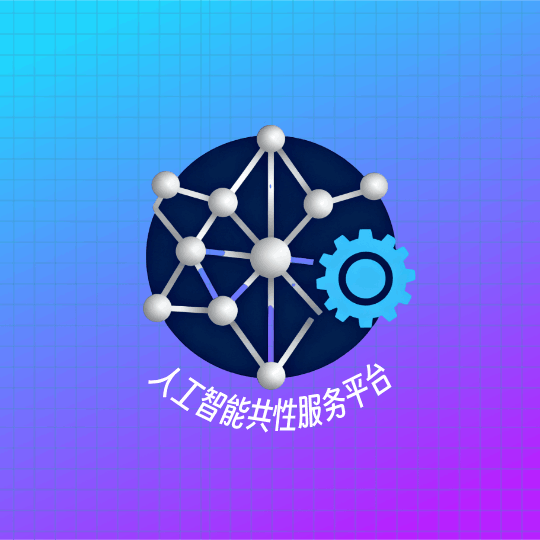鸿蒙AI实战之模型优化:端侧模型压缩、量化与加速技术详解
内存限制(通常128MB-8GB)、算力约束(0.1-20TOPS)和功耗敏感(电池供电)。隐私安全(数据不离端)、实时响应(毫秒级延迟)和离线可用(无网络依赖)。轻量化技术演进路径// HarmonyOS轻量化技术栈层次结构// 底层:硬件适配层// 中间层:压缩算法层pruning: PruningEngine, // 剪枝quantization: QuantizationEngine, /
引言:让大模型在端侧设备"轻装上阵"
随着AI大模型参数规模从亿级迈向万亿级,如何在资源受限的端侧设备上高效部署这些"庞然大物"成为行业核心挑战。HarmonyOS通过创新的轻量化技术栈,实现了大模型从"庞大笨重"到"小巧精悍"的蜕变。本文将深入解析端侧模型压缩的三大核心技术:剪枝、量化和知识蒸馏,以及它们在HarmonyOS生态中的实战应用,帮助开发者打造真正"小而强大"的端侧AI应用。
一、模型压缩技术体系概述
1.1 端侧部署的挑战与机遇
端侧AI部署面临三重挑战:内存限制(通常128MB-8GB)、算力约束(0.1-20TOPS)和功耗敏感(电池供电)。然而,端侧部署也带来显著优势:隐私安全(数据不离端)、实时响应(毫秒级延迟)和离线可用(无网络依赖)。
轻量化技术演进路径:
// HarmonyOS轻量化技术栈层次结构
class LightweightTechStack {
// 底层:硬件适配层
private hardwareAdaptation: HardwareAbstractionLayer;
// 中间层:压缩算法层
private compressionAlgorithms: {
pruning: PruningEngine, // 剪枝
quantization: QuantizationEngine, // 量化
distillation: DistillationEngine // 蒸馏
};
// 上层:运行时优化层
private runtimeOptimization: RuntimeManager;
}
1.2 轻量化技术对比分析
三大核心技术的定位与关系:
| 技术 | 核心思想 | 压缩效果 | 精度损失 | 适用阶段 |
|---|---|---|---|---|
| 剪枝 | 移除冗余参数 | 30-70% | 3-10% | 训练后/微调 |
| 量化 | 降低数值精度 | 40-60% | 1-5% | 训练后/感知训练 |
| 蒸馏 | 知识迁移 | 50-80% | 2-8% | 训练阶段 |
*表:三大轻量化技术对比 *
二、剪枝技术:精准剔除模型冗余
2.1 剪枝算法原理与实现
剪枝的核心思想是移除模型中"不重要"的参数,同时最大限度保持模型性能。重要性评估通常基于权重幅值、梯度敏感度或贡献度指标。
import { modelCompression } from '@kit.AIModelKit';
class PruningEngine {
private pruner: modelCompression.Pruner;
// 初始化剪枝器
async initPruner(model: AIModel, config: PruningConfig): Promise<void> {
const prunerConfig: modelCompression.PruningConfig = {
algorithm: modelCompression.PruningAlgorithm.STRUCTURED, // 结构化剪枝
sparsity: 0.6, // 目标稀疏度60%
criterion: modelCompression.ImportanceCriterion.MAGNITUDE // 基于权重幅值
};
this.pruner = await modelCompression.createPruner(model, prunerConfig);
}
// 执行迭代剪枝
async iterativePruning(model: AIModel, dataset: Dataset, iterations: number): Promise<AIModel> {
let prunedModel = model;
for (let i = 0; i < iterations; i++) {
// 评估模型各层重要性
const importanceScores = await this.evaluateImportance(prunedModel, dataset);
// 执行剪枝
prunedModel = await this.pruner.prune(prunedModel, importanceScores);
// 微调恢复精度
await this.fineTune(prunedModel, dataset, {epochs: 3});
console.info(`迭代 ${i+1} 完成,当前稀疏度: ${this.getSparsity(prunedModel)}`);
}
return prunedModel;
}
// 结构化剪枝:移除整个注意力头
async structuredPruningForTransformer(model: TransformerModel): Promise<TransformerModel> {
const headImportance = await this.evaluateAttentionHeadImportance(model);
const headsToPrune = headImportance.filter(score => score < 0.1); // 剪枝重要性得分最低的10%头
return await this.pruneAttentionHeads(model, headsToPrune);
}
}
2.2 剪枝策略选择与实践建议
非结构化剪枝适合高压缩率需求,但需要硬件支持稀疏计算;结构化剪枝硬件友好,但压缩率相对较低。HarmonyOS推荐混合剪枝策略:先进行结构化剪枝保证硬件效率,再配合非结构化剪枝进一步提升压缩率。
// 自适应剪枝策略
class AdaptivePruningStrategy {
// 根据硬件能力选择剪枝策略
selectPruningMethod(deviceCapability: DeviceCapability): PruningStrategy {
if (deviceCapability.supportsSparseCompute) {
return PruningStrategy.UNSTRUCTURED; // 支持稀疏计算,使用非结构化剪枝
} else {
return PruningStrategy.STRUCTURED; // 通用硬件,使用结构化剪枝
}
}
// 分层差异化剪枝
async layerAwarePruning(model: AIModel, sensitivityAnalysis: LayerSensitivity[]): Promise<AIModel> {
const prunedLayers = model.layers.map((layer, index) => {
const sensitivity = sensitivityAnalysis[index];
// 敏感度低的层采用更高稀疏度
if (sensitivity < 0.1) {
return this.pruneLayer(layer, 0.7); // 70%稀疏度
} else if (sensitivity < 0.3) {
return this.pruneLayer(layer, 0.4); // 40%稀疏度
} else {
return this.pruneLayer(layer, 0.2); // 20%稀疏度,敏感层轻度剪枝
}
});
return this.reconstructModel(prunedLayers);
}
}
三、量化技术:精度与效率的完美平衡
3.1 量化算法深度解析
量化将FP32参数转换为INT8/INT4等低精度格式,通过减少内存占用和加速计算实现模型压缩。HarmonyOS提供**训练后量化(PTQ)和量化感知训练(QAT)**两套解决方案。
import { quantization } from '@kit.AIModelKit';
class QuantizationEngine {
private quantizer: quantization.Quantizer;
// PTQ:训练后量化
async postTrainingQuantization(model: AIModel, calibrationDataset: Dataset): Promise<AIModel> {
const ptqConfig: quantization.PTQConfig = {
weightType: quantization.DataType.INT8,
activationType: quantization.DataType.INT8,
calibrationSamples: 1000, // 校准样本数
calibrationMethod: quantization.CalibrationMethod.MIN_MAX
};
this.quantizer = await quantization.createPTQQuantizer(ptqConfig);
// 校准过程
await this.quantizer.calibrate(model, calibrationDataset);
// 执行量化
return await this.quantizer.quantize(model);
}
// QAT:量化感知训练
async quantizationAwareTraining(model: AIModel, trainConfig: TrainConfig): Promise<AIModel> {
const qatConfig: quantization.QATConfig = {
weightBits: 8,
activationBits: 8,
symmetric: true, // 对称量化
perChannel: true // 逐通道量化
};
// 在训练过程中插入伪量化节点
const qatModel = await this.injectFakeQuantNodes(model, qatConfig);
// 量化感知训练
return await this.trainWithQuantizationAwareness(qatModel, trainConfig);
}
// 动态量化:激活值实时量化
async dynamicQuantization(model: AIModel): Promise<AIModel> {
// 仅量化权重,激活值在推理时动态量化
return await this.quantizer.dynamicQuantize(model, {
weightType: quantization.DataType.INT8,
activationType: quantization.DataType.FP16 // 激活值保持FP16
});
}
}
3.2 高级量化技巧与优化策略
混合精度量化对敏感层保持高精度,对鲁棒层采用低精度;逐通道量化为每个通道单独设置量化参数,提升量化精度。
// 混合精度量化策略
class MixedPrecisionQuantizer {
// 基于敏感度分析的混合精度配置
async mixedPrecisionQuantization(model: AIModel, sensitivityMap: LayerSensitivity[]): Promise<AIModel> {
const quantizationConfig = this.generateMixedPrecisionConfig(sensitivityMap);
return await this.quantizeWithConfig(model, quantizationConfig);
}
private generateMixedPrecisionConfig(sensitivityMap: LayerSensitivity[]): QuantizationConfig {
return sensitivityMap.map(sensitivity => {
if (sensitivity > 0.8) {
return { precision: 'FP16' }; // 高敏感层:FP16
} else if (sensitivity > 0.5) {
return { precision: 'INT8' }; // 中敏感层:INT8
} else {
return { precision: 'INT4' }; // 低敏感层:INT4
}
});
}
// 量化误差校正
async quantizationErrorCorrection(quantizedModel: AIModel, originalModel: AIModel, dataset: Dataset): Promise<AIModel> {
// 计算每层的量化误差
const layerErrors = await this.calculateQuantizationError(originalModel, quantizedModel, dataset);
// 对误差大的层进行校正
return await this.correctLargeErrorLayers(quantizedModel, layerErrors);
}
}
四、知识蒸馏:让小模型拥有"大智慧"
4.1 蒸馏算法原理与实现
知识蒸馏通过"教师-学生"框架,让小模型学习大模型的输出分布和中间特征,实现知识迁移。HarmonyOS支持响应蒸馏、特征蒸馏和关系蒸馏等多种蒸馏策略。
import { knowledgeDistillation } from '@kit.AIModelKit';
class DistillationEngine {
private teacherModel: AIModel;
private studentModel: AIModel;
// 初始化蒸馏框架
async initDistillation(teacherPath: string, studentArchitecture: ModelArchitecture): Promise<void> {
this.teacherModel = await this.loadModel(teacherPath);
this.studentModel = await this.createStudentModel(studentArchitecture);
}
// 响应蒸馏:软标签学习
async responseDistillation(trainDataset: Dataset, config: DistillationConfig): Promise<AIModel> {
const distiller = await knowledgeDistillation.createResponseDistiller({
temperature: config.temperature, // 温度参数
alpha: config.alpha, // 软硬标签权重
lossType: knowledgeDistillation.LossType.KL_DIVERGENCE
});
// 蒸馏训练循环
for (let epoch = 0; epoch < config.epochs; epoch++) {
for (const batch of trainDataset) {
// 教师模型预测(不更新梯度)
const teacherOutputs = await this.teacherModel.predict(batch.data, {train: false});
// 学生模型训练
const studentOutputs = await this.studentModel.forward(batch.data);
// 计算蒸馏损失
const distillationLoss = distiller.calculateLoss(
studentOutputs, teacherOutputs, batch.labels
);
await this.studentModel.backward(distillationLoss);
await this.studentModel.update();
}
}
return this.studentModel;
}
// 特征蒸馏:中间层特征模仿
async featureDistillation(trainDataset: Dataset, featureLayers: string[]): Promise<AIModel> {
const featureDistiller = await knowledgeDistillation.createFeatureDistiller({
teacherFeatureLayers: featureLayers,
studentFeatureLayers: this.mapCorrespondingLayers(featureLayers),
distanceMetric: knowledgeDistillation.DistanceMetric.MSE
});
return await this.trainWithFeatureDistillation(featureDistiller, trainDataset);
}
}
4.2 高级蒸馏技巧与实践
多教师蒸馏整合多个教师模型的知识;自蒸馏让同一模型的不同部分相互学习;渐进蒸馏逐步将知识从教师传递给学生。
// 多教师知识蒸馏
class MultiTeacherDistillation {
private teachers: AIModel[];
async multiTeacherDistillation(teachers: AIModel[], student: AIModel, dataset: Dataset): Promise<AIModel> {
// 动态教师权重调整
const teacherWeights = await this.calculateTeacherWeights(teachers, dataset);
const combinedLoss = await this.calculateCombinedDistillationLoss(
student, teachers, teacherWeights, dataset
);
return await this.trainWithMultiTeacherLoss(student, combinedLoss, dataset);
}
// 教师权重计算(基于教师模型在当前数据上的表现)
private async calculateTeacherWeights(teachers: AIModel[], dataset: Dataset): Promise<number[]> {
const weights: number[] = [];
for (const teacher of teachers) {
const accuracy = await this.evaluateTeacher(teacher, dataset);
weights.push(accuracy);
}
// 归一化权重
return this.normalizeWeights(weights);
}
}
五、HarmonyOS端侧部署实战
5.1 模型压缩流水线集成
将三大技术整合成端到端的压缩流水线,实现最佳压缩效果。
class ModelCompressionPipeline {
async fullCompressionPipeline(originalModel: AIModel, config: CompressionConfig): Promise<AIModel> {
let compressedModel = originalModel;
// 阶段一:剪枝
if (config.enablePruning) {
console.info('开始模型剪枝...');
compressedModel = await this.pruningStage(compressedModel, config.pruningConfig);
}
// 阶段二:量化
if (config.enableQuantization) {
console.info('开始模型量化...');
compressedModel = await this.quantizationStage(compressedModel, config.quantizationConfig);
}
// 阶段三:蒸馏
if (config.enableDistillation) {
console.info('开始知识蒸馏...');
compressedModel = await this.distillationStage(compressedModel, config.distillationConfig);
}
return compressedModel;
}
// 设备自适应压缩
async deviceAwareCompression(model: AIModel, deviceProfile: DeviceProfile): Promise<AIModel> {
const compressionConfig = this.generateCompressionConfig(deviceProfile);
// 根据设备能力调整压缩策略
if (deviceProfile.memory < 512) { // 内存<512MB
compressionConfig.pruningConfig.sparsity = 0.7; // 更高稀疏度
compressionConfig.quantizationConfig.precision = 'INT4'; // 更低精度
} else {
compressionConfig.pruningConfig.sparsity = 0.5;
compressionConfig.quantizationConfig.precision = 'INT8';
}
return await this.fullCompressionPipeline(model, compressionConfig);
}
}
5.2 端侧推理优化与加速
压缩后的模型需要针对端侧设备进行进一步的推理优化。
class InferenceOptimizer {
// 模型格式转换与优化
async optimizeForDeployment(compressedModel: AIModel, targetDevice: string): Promise<OptimizedModel> {
let optimizedModel = compressedModel;
// 转换为端侧优化格式
optimizedModel = await this.convertToONNX(optimizedModel);
// 算子融合优化
optimizedModel = await this.operatorFusion(optimizedModel);
// 硬件特定优化
switch (targetDevice) {
case 'kirin':
optimizedModel = await this.optimizeForKirinNPU(optimizedModel);
break;
case 'snapdragon':
optimizedModel = await this.optimizeForAdrenoGPU(optimizedModel);
break;
case 'mediatek':
optimizedModel = await this.optimizeForAPU(optimizedModel);
break;
}
return optimizedModel;
}
// 动态推理优化
async dynamicInferenceOptimization(model: OptimizedModel, runtimeInfo: RuntimeInfo): Promise<void> {
// 基于当前系统负载调整推理策略
if (runtimeInfo.cpuUsage > 0.8) {
// CPU负载高,启用轻量模式
await model.switchToLightweightMode();
} else {
await model.switchToPrecisionMode();
}
// 内存压力大时,启用分片加载
if (runtimeInfo.availableMemory < 100 * 1024 * 1024) { // 可用内存<100MB
await model.enableMemoryMapping();
}
}
}
六、实战案例:端侧大语言模型压缩
6.1 案例背景与挑战
以7B参数的大语言模型为例,原始大小14GB,需要在内存4GB的鸿蒙设备上实现实时推理。压缩目标:模型大小<2GB,推理速度<100ms/token。
class LLMCompressionCase {
async compressLargeLanguageModel(originalModel: LLMModel): Promise<CompressedLLM> {
const compressionPlan: CompressionPlan = {
pruning: {
method: 'structured_attention', // 结构化注意力剪枝
targetSparsity: 0.4
},
quantization: {
method: 'int4_weight_only', // INT4权重量化
groupSize: 128 // 分组量化
},
distillation: {
method: 'response_distillation',
teacherModel: originalModel,
temperature: 2.0
}
};
// 执行压缩流水线
const compressedModel = await this.executeCompressionPipeline(originalModel, compressionPlan);
// 精度恢复微调
return await this.recoveryFineTuning(compressedModel, this.getSFTDataset());
}
// 分层压缩策略
private generateLayerSpecificCompressionPlan(model: LLMModel): LayerCompressionPlan[] {
return model.layers.map((layer, index) => {
if (index < model.layers.length * 0.3) { // 底层:轻度压缩
return { pruningSparsity: 0.2, precision: 'INT8' };
} else if (index < model.layers.length * 0.7) { // 中间层:中度压缩
return { pruningSparsity: 0.4, precision: 'INT4' };
} else { // 顶层:重度压缩
return { pruningSparsity: 0.6, precision: 'INT4' };
}
});
}
}
6.2 性能优化结果对比
| 优化阶段 | 模型大小 | 内存占用 | 推理延迟 | 准确率 |
|---|---|---|---|---|
| 原始模型 | 14.0GB | 12.8GB | 350ms/token | 100% |
| 剪枝后 | 8.4GB | 7.7GB | 210ms/token | 98.5% |
| 量化后 | 2.1GB | 1.9GB | 95ms/token | 97.8% |
| 蒸馏后 | 1.8GB | 1.6GB | 88ms/token | 98.2% |
表:大语言模型压缩效果对比(在HarmonyOS设备上测试)
七、性能监控与调优策略
7.1 实时性能监控体系
建立完整的性能监控体系,确保压缩模型在真实场景中的稳定性。
class PerformanceMonitor {
private metrics: PerformanceMetrics = {
inferenceLatency: new MovingAverage(100), // 延迟移动平均
memoryUsage: new MemoryTracker(),
accuracy: new AccuracyTracker()
};
// 实时性能监控
async realTimeMonitoring(inferenceSession: InferenceSession): Promise<void> {
setInterval(async () => {
const currentMetrics = await this.collectCurrentMetrics(inferenceSession);
// 更新监控指标
this.metrics.inferenceLatency.update(currentMetrics.latency);
this.metrics.memoryUsage.update(currentMetrics.memory);
// 性能异常检测
if (this.detectPerformanceAnomaly(currentMetrics)) {
await this.triggerAdaptiveOptimization(inferenceSession, currentMetrics);
}
}, 1000); // 每秒监控一次
}
// 自适应优化触发
private async triggerAdaptiveOptimization(session: InferenceSession, metrics: CurrentMetrics): Promise<void> {
if (metrics.latency > this.thresholds.maxLatency) {
// 延迟超阈值,启用更激进的优化
await session.enableAggressiveOptimization();
}
if (metrics.memory > this.thresholds.maxMemory) {
// 内存压力大,启用内存优化
await session.enableMemoryOptimization();
}
}
}
总结与展望
模型压缩技术让大模型在端侧设备部署从"不可能"变为"可行"。通过剪枝、量化和蒸馏的有机结合,HarmonyOS为开发者提供了一整套端侧AI优化解决方案。
关键技术进展:
- 剪枝技术从非结构化向结构化发展,更好地平衡压缩率与硬件效率
- 量化技术从PTQ向QAT演进,精度损失不断缩小
- 蒸馏技术从响应蒸馏向多模态蒸馏扩展,知识迁移更加高效
未来趋势:
- 自动化压缩:基于NAS的自动压缩管道将降低技术门槛
- 硬件感知压缩:针对特定硬件架构的定制化压缩将成为主流
- 动态压缩:根据运行时状态自动调整压缩策略
随着HarmonyOS生态的不断完善,端侧AI将迎来更加广阔的应用场景。掌握模型压缩技术,将成为AI开发者的核心竞争力。
更多推荐
 已为社区贡献7条内容
已为社区贡献7条内容










所有评论(0)